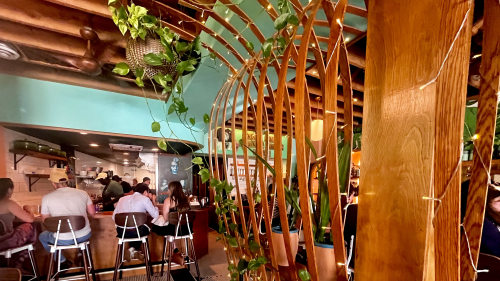Madison, while confined to an isthmus, is home to a myriad of unique architectural styles. We looked into three popular styles in the 608 and where to check them out.
Brutalist
One of the easier architectural styles to spot, brutalism is characterized by its rough (often concrete) surfaces, massive structure, and dramatic presence.
- George L. Mosse Humanities Building | This notorious campus building is known for its maze-like halls and aggressive concrete demeanor. While there are many theories suggesting the confusing design was purposefully riot-proof, those have since been debunked.
- Elvehjem Art Center (Chazen Museum of Art) | Next door to Humanities and designed by the same architect, the Elvehjem Art Center wing of the Chazen offers a softer approach to the brutalist style.
Art Deco/Moderne
Art deco first came onto the scene around 1925 at the International Exhibition of Modern Decorative and Industrial Arts. American architects adopted the style which led to the emergence of its sister style, art moderne. Art moderne builds are often horizontal with curved edges while art deco boasts a more vertical and symmetrically linear look.
- Quisling Terrace Apartments | Once a medical clinic, this local historical landmark is the epitome of art moderne style.
- Tenney Plaza | The perfect counterpart to the Quisling’s moderne style, Madison’s first steel-frame high-rise exhibits art deco to a T.
Prairie
We’d be remiss to cover Madison architecture without mentioning Frank Lloyd Wright. Wright, one of recent history’s most notable architects, is responsible for the popular Prairie style of architecture. This style features strong horizontals, asymmetric floor plans, and seamless transitions from indoors to outdoors.
- Airplane House | The University Heights neighborhood is home to this iconic Wright design.
- Lamp House | The oldest Wright house in the city was built for Frank’s childhood friend + Madison’s treasurer at the time, Robert Lamp.












